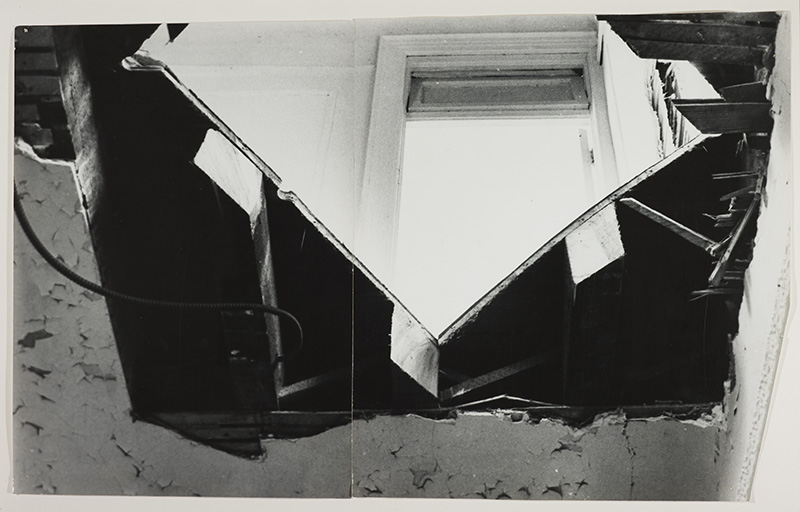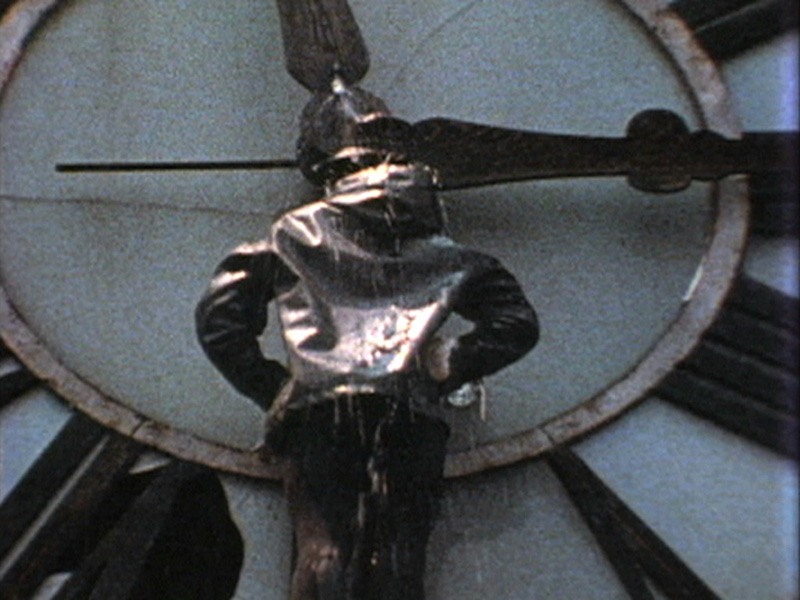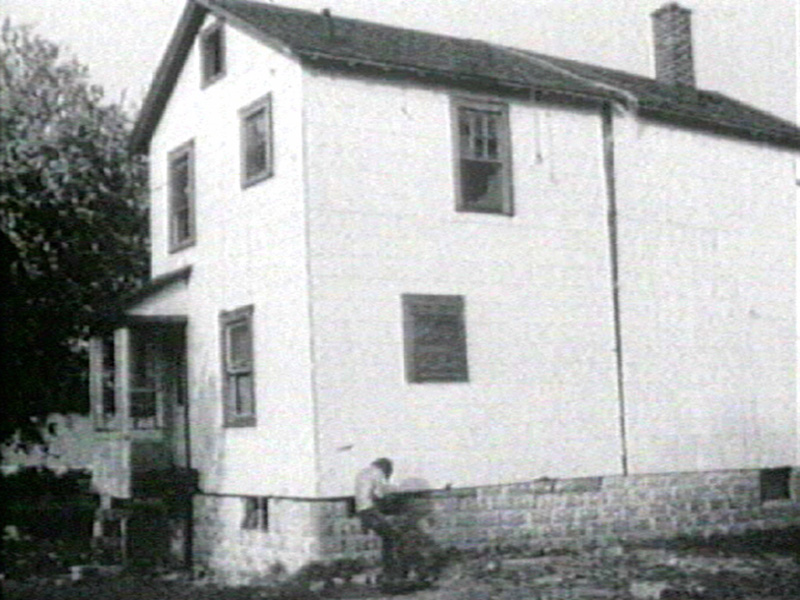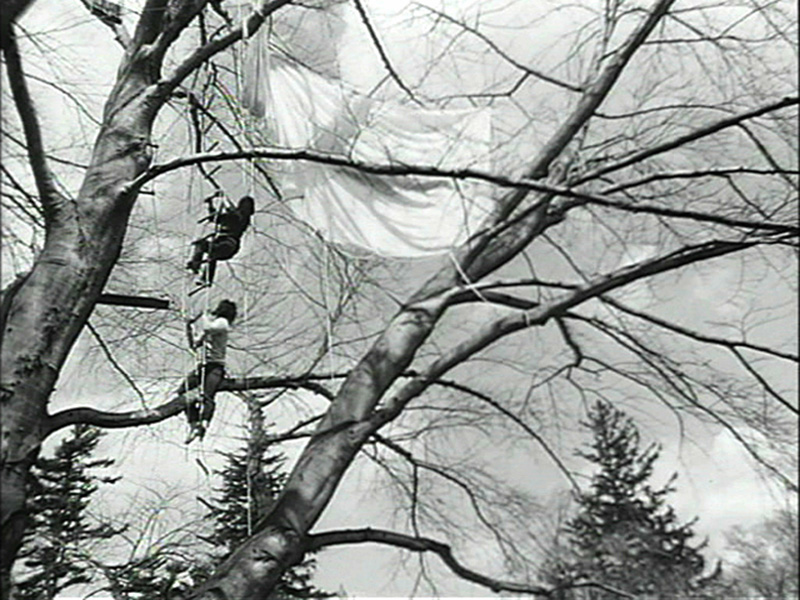ART-PRESENTATION: Gordon Matta-Clark
 Gordon Matta-Clark is one of the most influential artists of the 1970s, whose work has continued to be a noted influence of both architects and artists since.Gordon Matta-Clark’s parents were the artists Roberto Matta and Anna Clark and his godmother was Teeny Duchamp wife of Marchel Duchamp. He spent his childhood in New York, Paris, and Chile. He studied architecture at Cornell University in 1963–68.
Gordon Matta-Clark is one of the most influential artists of the 1970s, whose work has continued to be a noted influence of both architects and artists since.Gordon Matta-Clark’s parents were the artists Roberto Matta and Anna Clark and his godmother was Teeny Duchamp wife of Marchel Duchamp. He spent his childhood in New York, Paris, and Chile. He studied architecture at Cornell University in 1963–68.
By Efi Michalarou
Photo: Serralves Museum Archive
The exhibition “Splitting, Cutting, Writing, Drawing, Eating… Gordon Matta-Clark” at the Serralves Museum of Contemporary Art in Porto, focuses on the social and creative aspects of Gordon Matta-Clark´s conception of architecture, or as he put it, “Making space without building it”, featuring correspondence, drawings, photographs, notebooks, and films related to the artist’s key projects, drawn from the archive of the Canadian Centre for Architecture, Montréal. The exhibition also features 2 photographs and 8 films from Serralves Collection, dated between 1971 and 1974. Along with his major building cuts from 1973 to 1978, in which laboriously cut holes into floors of abandoned or disused buildings, including “A W-Hole House”, “Conical Intersect”, “Day’s End” and “Splitting” (1974), the exhibition also explores his interest in metabolic and cooking processes, including his restaurant “Food” (1971), his play with language and the syntax of voids, gaps, and abandoned spaces, and the use of drawing as a mode of thinking through space. At the 1969 exhibition Earth Art at Cornell, Gordon Matta-Clark met Robert Smithson and helped Dennis Oppenheim construct two projects, including “Beebe Lake Ice Cut”. Like the earth artists, Matta-Clark rejected the commodification of art, eventually working in photography, film, video, Performance, drawing, photo collage, and sculpture in the form of large-scale interventions into existing architecture. Over the following two years, he explored the metamorphic possibilities of cooking, beginning by frying Polaroid photographs in oil with gold leaf. In the early ’70s, he helped organize 112 Greene Street, an exhibition space showing new art. He also collaborated on “Food”, a combined restaurant and performance piece, he made “Garbage Wall”, a prototype shelter for the homeless. During the ‘70s, Matta-Clark made the works for which he is best known: his “Anarchitecture”, temporary works created by sawing and carving sections out of buildings, most of which were scheduled to be destroyed. He documented these projects in photography and film. Although he made interventions into a former iron foundry in Genoa, Italy, in 1973, his first large-scale project has been defined as “Splitting” (1974). To create this work, Matta-Clark sawed two parallel slices through a nondescript wood-frame house in Englewood, New Jersey, and removed the material between the two cuts. In addition, he cut out the corners of the house’s roof, which were subsequently shown at John Gibson Gallery in New York. He made similar gestures in some of his photographs, cutting the actual negatives rather than manipulating individual prints. In “Day’s End” (1975), the artist removed part of the floor and roof of a derelict pier in Manhattan, creating a “Sun and water temple”. After he worked undiscovered on the project for two months, the City of New York filed a lawsuit against him, it was eventually dropped. For the Biennale de Paris the same year, he made “Conical Intersect” by cutting a large cone-shaped hole through two 17th Century houses, which were to be knocked down to construct the Centre Georges Pompidou. In 1976, Matta-Clark created his own controversy. Rather than participating in an exhibition alongside well-known architects as planned, he shot out the windows of the Institute of Architecture and Urban Studies in New York. This act has been interpreted as a protest against the architectural establishment. Interested in the inner workings underneath the visible, he filmed and photographed tunnels, sewers, and catacombs in New York and Paris in 1977, a project aided by a fellowship from the John Simon Guggenheim Memorial Foundation. Matta-Clark died from cancer on 27/8/1978. The exhibition also presents a selection of works by other artists, including Ed Ruscha, Dan Graham, Alvin Baltrop, and Emily Roysdon, that set the context for Matta Clark’s literal and metaphorical gestures.
Info: Curators: João Ribas and Delfim Sardo, Serralves Museum of Contemporary Art, Rua D. João de Castro 210, Porto, Duration: 5/5-3/9/17, Days & Hours: Mon & Wed-Fri 10:00-19:00, Sat-Sun 10:00-20:00, www.serralves.pt



